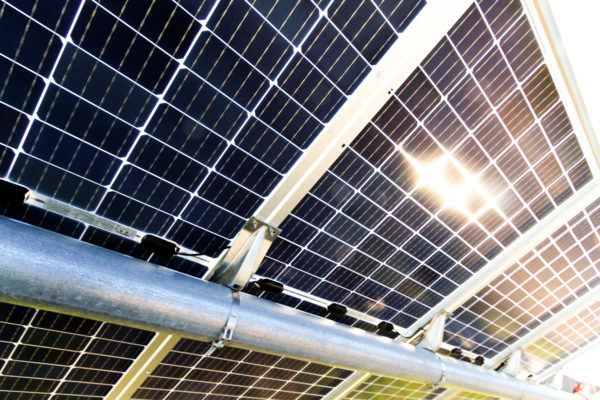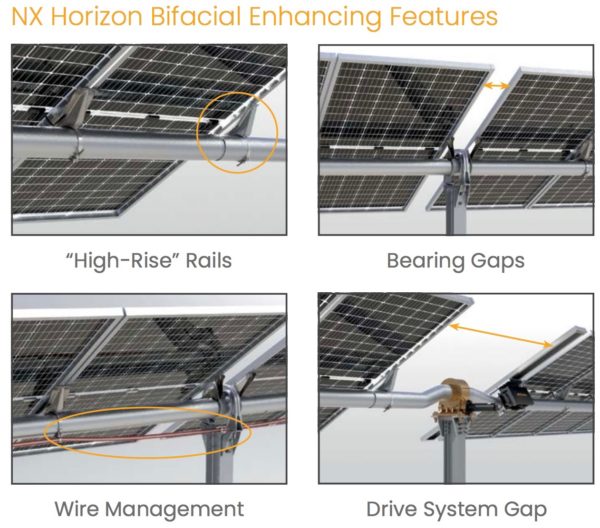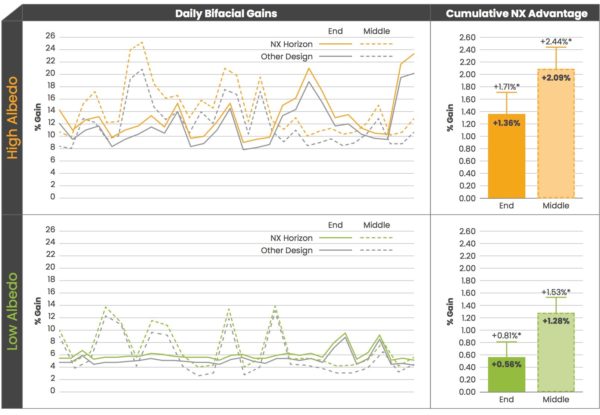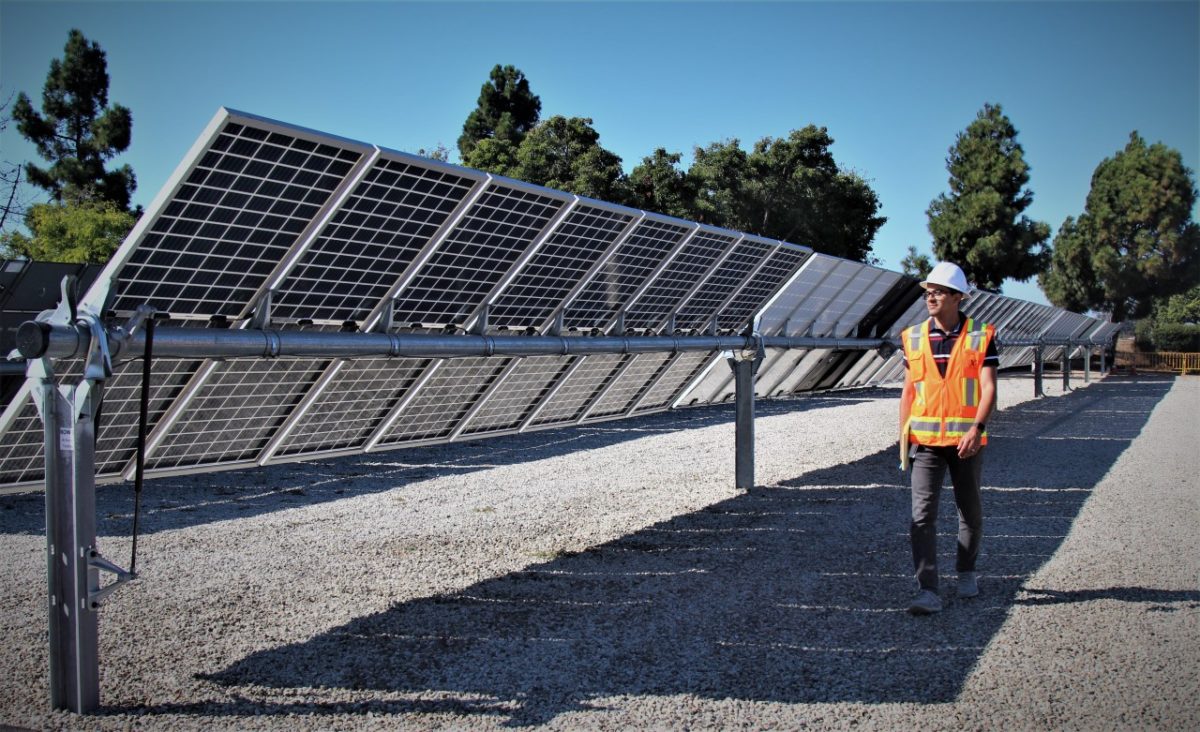Nextracker is no stranger to large-scale solar supply, the company accounted for 32% of the global tracker market according to IHS Markit’s latest report (July 2020), and has supplied the trackers for such large-scale Australian projects as the 255 MW Sunraysia Solar Farm and the 120 MW Bomen Solar Farm in NSW. Now Nextracker’s optimised bifacial solution has been selected by Neoen and EPC contractor Sterling & Wilson for Queensland’s 460 MW Western Downs Green Power Hub, Australia’s largest solar power plant.
Neoen and Sterling & Wilson have opted for Nextracker’s NX Horizon™ which, according to a Nextracker White Paper written in collaboration with PVEL and verified by PV Evolution Labs, provides an addition 1.02% to 1.67% of DC-side bifacial gains as compared to other 1P single-axis tracker designs. These gains are provided by the bifacial modules mounted on the NX Horizon™’s 120-degree range of motion whcih features an inherent system architecture minimising structural shading.

On a project the size of the Western Downs Green Power Hub, if the NX Horizon™ delivers a gain of 1.5%, that would translate to an annual gain of over 15 GWh, enough electricity to power 3,000 homes.
A recent Nextracker techno-economic assessment evaluating yield potential and cost effectiveness based on levelised cost of energy (LCOE) for large-scale PV power plant architectures globally suggests the “disruptive potential of tracker-mounted bifacial systems.” The report concludes that t “bifacial single-axis tracker installations achieved the lowest LCOE values for 93.1% of the total land area.”
Of course, it must be mentioned that these areas represent a variety of land types. It is no surprise then why Nextracker believes bifacial one-axis tracking systems have the power “transform the PV market.” Indeed, Jenya Meydbray, CEO of PVEL, described bifacial PV technology as “the single largest LCOE improvement opportunity since the introduction of trackers.”
The NX Horizon has several unique features, including a round torque tube and high-rise mounting rails resulting in a tube-to-cell height of 90mm. A small gap at each bearing to ensure that posts are not situated directly below or next to cells. A gap at each foundation allowing installers to use a wire chase to rout DC source circuit conductors under the torque tube. And lastly, the drive system components are situated in another gap at the centre of each NX Horizon row rather than underneath.

In side-by-side testing these features helped NX Horizon to gain an advantage of between 1.28% and 2.09% depending on the ground-surface albedo.

Nextracker expects installation to begin on the Western Downs Green Power Hub in 2021 and builds upon Nextracker’s already 4 GW strong Australian portfolio. Nextracker Australia and Oceania, Peter Wheale, described the deal as a milestone and an honour. “We have led the market by passionately delivering more customer value with best-in-class yield generation,” continued Wheale, “client support and asset management technologies.”
This content is protected by copyright and may not be reused. If you want to cooperate with us and would like to reuse some of our content, please contact: editors@pv-magazine.com.









By submitting this form you agree to pv magazine using your data for the purposes of publishing your comment.
Your personal data will only be disclosed or otherwise transmitted to third parties for the purposes of spam filtering or if this is necessary for technical maintenance of the website. Any other transfer to third parties will not take place unless this is justified on the basis of applicable data protection regulations or if pv magazine is legally obliged to do so.
You may revoke this consent at any time with effect for the future, in which case your personal data will be deleted immediately. Otherwise, your data will be deleted if pv magazine has processed your request or the purpose of data storage is fulfilled.
Further information on data privacy can be found in our Data Protection Policy.